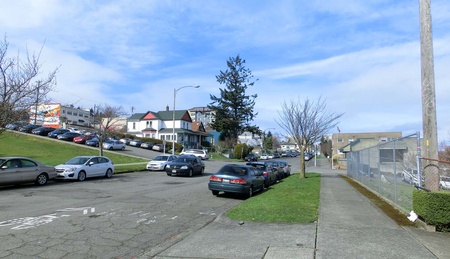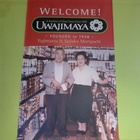The main reason why Seattle and Tacoma in Washington state flourished as towns for Japanese immigrants was that, like San Francisco and Los Angeles, they were places where regular shipping routes from Japan were available.
The first shipping route from Japan to North America was in 1896 (Meiji 29), when Nippon Yusen opened a regular route between Hong Kong, Japan, and Seattle. The Miike Maru departed Kobe on August 1 of that year, passing through Yokohama, and made an extra stop in Honolulu on the way, before arriving in Seattle on August 31.
The reason for opening the route to Seattle was to cooperate with the transcontinental railroad that started in Seattle, and to transport cargo from the East Coast to the Pacific Ocean by sea. In addition, since an American shipping company had already opened a route to San Francisco, they also wanted to avoid competition. However, in 1898, Toyo Kisen boldly entered the San Francisco route.
After that, anti-Japanese sentiment gradually grew on the West Coast of America, and an agreement was signed between Japan and the United States restricting immigration from Japan to the mainland of the United States in 1908 (Meiji 41). Despite this situation, the following year Osaka Shosen opened a cargo-focused route to Tacoma, and ships such as the "Takoma Maru" began traveling between Hong Kong, Japan, and Tacoma.
However, with the opening of the Panama Canal in 1914 (Taisho 3), demand for this route decreased and it was discontinued in 1931 (Showa 6).
First, I worked at a fresh fish wholesaler.
Moriguchi Fujimatsu came to America in 1923 (Taisho 12), and immigrants and settlers from Japan who had used these sea routes had already formed communities and Japantowns in both Seattle and Tacoma.
Going back to the 1880 (Meiji 13) US census, there was only one Japanese person living in Washington state. After that, the number of Japanese working at railroad construction sites, lumber mills, farms, salmon canning factories and other places increased, and by 1922 (Taisho 11), the number of Japanese residents had reached over 22,000. Among these people, many were running restaurants, hotels, groceries, retail businesses and barbershops.
In this developing Japantown, Fujimatsu, who had come to Washington State, also began working. While staying with a friend from his hometown, he took various jobs, including working at a restaurant in Tacoma. He eventually ended up working at a fish wholesaler called "Maine Fish Company" on the main street of Seattle's Japantown.
The store's founder, Kihara Iwakichi, came to the United States in 1889 (Meiji 22) and settled in Seattle, where he began retailing fresh fish in 1902 (Meiji 35). He later opened a store on 6th Avenue and, together with Yoshida Masaru, also opened a butcher's department.
He also brought over his two younger brothers, Tomiichi and Ichimatsu, from Japan and together they continued to run a fresh fish wholesale business, and later incorporated the store into a company. In 1927 (Showa 2), they moved to a wharf on the seafront and expanded their business by directly unloading fish from fishing boats, and they expanded their sales channels throughout the United States.
In Japantown, businesses that provided food and ingredients such as rice, miso, and soy sauce to Japanese immigrants were thriving, and Maine Fish Company was one of them. Fujimatsu learned how to handle fish here, and at the same time, he met Tsutakawa Shozo, a native of Okayama Prefecture who had launched a variety of successful businesses targeting Japanese customers in Seattle.

His relationship with Tsutakawa would have a major impact on Fujimatsu's later life, both in his personal and professional life, but after observing and learning from Tsutakawa's business practices, Fujimatsu decided to start his own business. He came up with the idea of using the techniques he had developed in Uwajima, Japan to make and sell kamaboko and jakoten. These were handicrafts that others could not easily imitate.
After leaving the Maine Fish Company, Fujimatsu set up shop in Tacoma's Japantown and opened Uwajima Shoten (later Uwajimaya) in 1928. At the same time, he needed help, so he called his younger brother, Saisuke, who was eight years younger than him and lived in Ehime, to help out.
Every morning, Fujimatsu would make kamaboko and other products, and in the afternoon he would load them onto the back of a truck and head out to sell them in the surrounding area, where Japanese workers engaged in railway construction, fishing, and forestry work gathered.
While Fujimatsu was out and about, Saisuke managed the store. In addition to the standard everyday items, they also made and served New Year's dishes such as Datemaki, Kamaboko (fish cake) with a plate, and Gobomaki (burdock rolls), and the business gradually got on track.
(Titles omitted)
Reference: "A Centennial History of Japanese Americans in the United States" (Shin Nichibei Shimbunsha, 1961)
© 2018 Ryusuke Kawai







